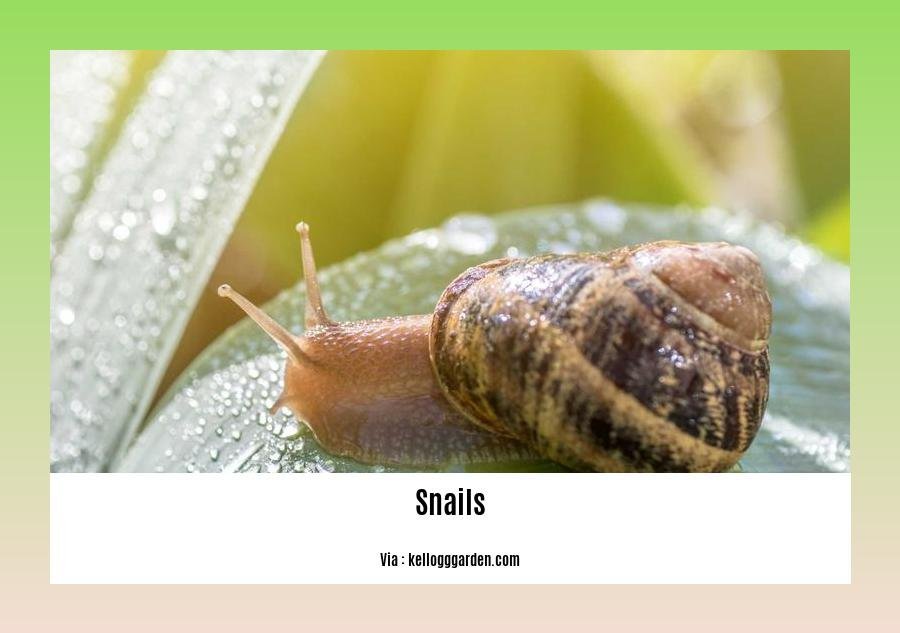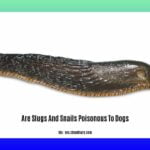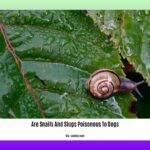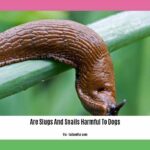Protecting Your Canine Companion: The Dangers of Dogs Eating Slugs and Snails
As responsible dog owners, it is our duty to keep our beloved furry friends safe and healthy. While we may be aware of certain hazards such as toxic foods or dangerous environments, one threat that often goes unnoticed is the risk posed by slugs and snails. Although these small creatures may seem harmless, they can actually be carriers of various parasites and diseases that can seriously harm our canine companions. In this article, we will explore the potential dangers that dogs face when they consume slugs and snails, as well as effective measures to protect their well-being.
Key Takeaways:
– Dogs can catch lungworm through eating slugs and snails that carry the parasite larvae.
– Dogs may accidentally eat slugs or snails when they are on objects like bones or toys, or when drinking from puddles or outdoor water bowls.
– The lungworm infection can have serious consequences for a dog’s health.
– Dogs can become infected with lungworm by swallowing slugs or snails that contain the larvae of the parasite.
– Not all snails and slugs carry the lungworm parasite.
– It is important to contact a vet if you suspect your dog has eaten a slug or snail in an area where lungworm cases have been reported.
– Keeping your dog’s toys indoors at night can reduce the risk of slugs infected with lungworm crawling over them.
– Dogs can become infected with lungworms through various sources, including eating slugs or snails, drinking contaminated water, or eating other animals that have consumed slugs.
– There are symptoms and signs of lungworm infection in dogs.
– Slugs and snails can be potentially poisonous to dogs.
– Dogs may eat insects and bugs out of curiosity.
– It is important for dog owners to be aware of the risks posed by lungworm and take preventive measures to protect their pets.
Dogs Eating Slugs and Snails: Understanding the Dangers
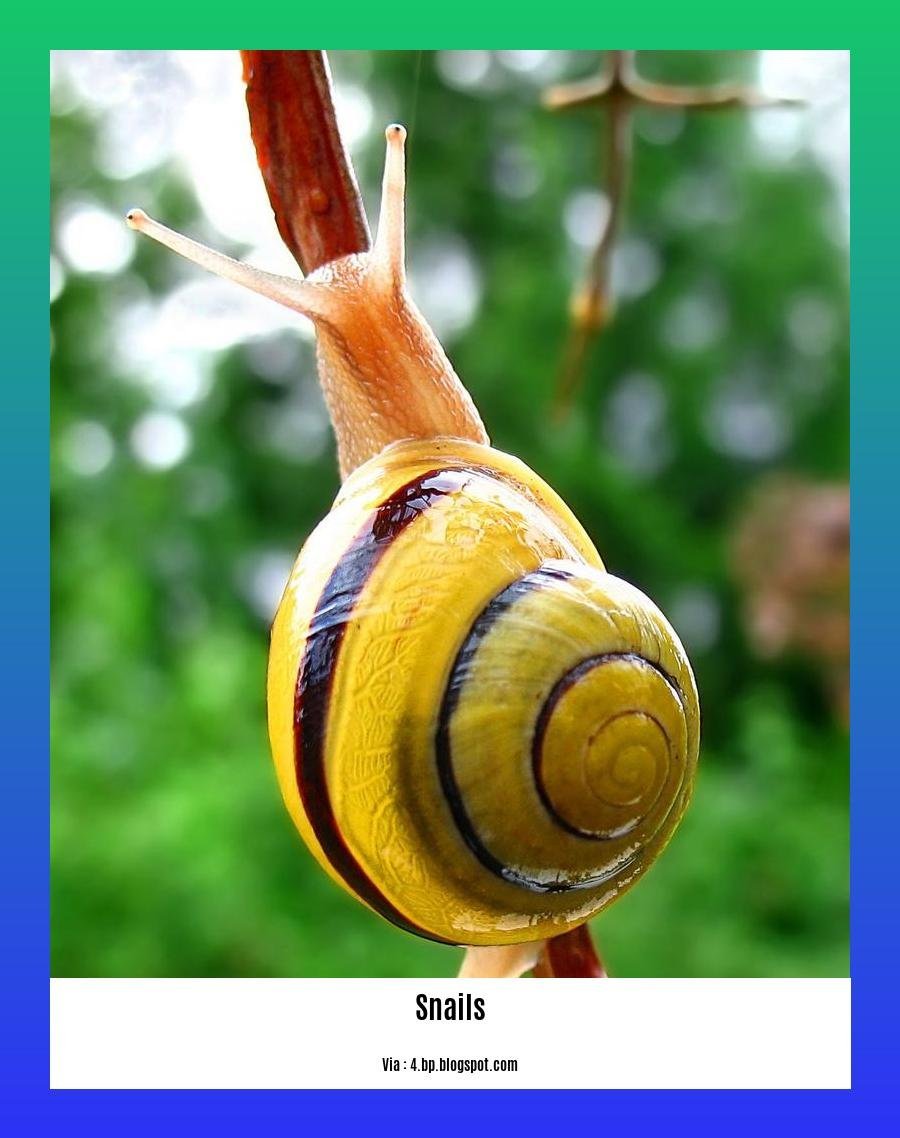
Slugs and snails may seem harmless, even intriguing to dogs. They slither and crawl, catching the attention of our curious canine companions. However, what many pet owners are unaware of is the potential risks associated with dogs consuming these slimy creatures. Today, we’ll dive into the world of dogs eating slugs and snails, exploring the dangers, symptoms, and preventive measures to keep our furry friends safe.
Why Are Dogs Attracted to Slugs and Snails?
While it may seem peculiar to us, dogs are naturally curious creatures. Just like they chase squirrels and rabbits, their instinctual drive to investigate their surroundings extends to small creatures like slugs and snails. Dogs may accidentally come across these critters while playing with outdoor toys, chewing on bones, or even drinking from puddles or outdoor water bowls.
The Dangers of Slug and Snail Consumption for Dogs
You may be wondering, why is it a concern if my dog eats a slug or snail? Well, the answer lies in one word: lungworm. Slugs and snails can carry a parasite called lungworm, and when a dog consumes them, they become susceptible to infection. Lungworm infection can have serious consequences for a dog’s health, as the parasites migrate through the dog’s body, potentially causing damage to their internal organs.
Identifying Symptoms of Slug and Snail Poisoning in Dogs
Recognizing the symptoms of slug and snail poisoning in dogs is crucial for prompt intervention. Keep an eye out for signs such as coughing, difficulty breathing, weight loss, changes in appetite, fatigue, and even neurological problems. If your dog exhibits any of these symptoms after consuming slugs or snails, it’s essential to seek veterinary assistance immediately.
Preventive Measures to Keep Your Dog Safe
Now that we understand the risks, let’s explore some preventive measures to protect our furry friends from the dangers of slug and snail consumption:
Garden Safety: Slugs and snails thrive in damp environments like gardens, so it’s crucial to regularly inspect and clean your garden area. Remove any decaying plant matter, as it tends to attract these creatures. Additionally, consider using slug and snail repellents that are pet-safe.
Avoid Outdoor Water Sources: Since slugs and snails are often found near water, it’s advisable to discourage your dog from drinking from puddles or outdoor water bowls. Instead, provide fresh water indoors to minimize the risk of accidental ingestion.
Nighttime Toy Management: To reduce the risk of slugs or snails crawling over your dog’s toys, bring them indoors at night when these critters are most active. Regularly clean and inspect your dog’s toys to ensure they are free from any potential hazards.
Regular Veterinary Check-ups: Maintaining regular veterinary check-ups is essential when it comes to preventing lungworm infection. Your vet can provide guidance on preventative medication, which can help protect your dog against parasites like lungworm.
Debunking Common Myths
It’s essential to address common misconceptions surrounding dogs eating slugs and snails:
Not all slugs and snails carry lungworm parasites: While it’s true that not all slugs and snails are infected with lungworm, it’s best to err on the side of caution and take preventive measures.
Dogs may eat insects and bugs out of curiosity: While curiosity drives dogs to explore their surroundings, it’s crucial to limit their contact with potentially harmful creatures like slugs and snails.
Final Thoughts: Prioritizing Your Dog’s Health
As responsible pet owners, it’s our duty to protect our furry companions from potential hazards like slugs and snails. By understanding the dangers of dogs eating slugs and snails, recognizing the symptoms of lungworm infection, and implementing preventive measures, we can ensure our dogs lead happy and healthy lives. Remember, if you suspect your dog has come into contact with slugs or snails in an area where lungworm cases have been reported, don’t hesitate to reach out to your veterinarian for guidance and support.
If you’re curious about whether turtles and tortoises can live together in harmony, check out our informative article on do turtles and tortoises get along.
Explore the fascinating world of endangered and extinct species in Pakistan through our comprehensive guide on endangered and extinct species in Pakistan.
Learn about the efforts to protect endangered animal species in Pakistan, by visiting endangered animal species in Pakistan and discover how you can contribute to their conservation.
Why are dogs attracted to slugs and snails?
Dogs are curious creatures by nature, driven by their instincts to explore and investigate the world around them. It’s not uncommon for dogs to show interest in slugs and snails, but have you ever wondered why? In this article, we will delve into the reasons behind dogs’ attraction to slugs and snails and explore the potential dangers associated with their consumption.
The Curiosity Factor
Dogs have an inherent curiosity that draws them to various creatures, including slugs and snails. These slimy garden dwellers may pique their interest due to their unfamiliar appearance and movement patterns. Just like how we might be intrigued by something we’ve never encountered before, dogs are naturally curious about the world around them.
The Smell and Taste
Another reason dogs may be attracted to slugs and snails is the smell and taste they emit. These creatures produce a distinctive scent that dogs find enticing. Additionally, slugs and snails can sometimes leave behind a trail of slime that dogs may find intriguing. While our canine companions may not find the scent or taste particularly pleasant, the unfamiliarity and curiosity drive them to investigate further.
The Hunt and Chase Instinct
Dogs have a strong instinct to hunt and chase small creatures, and slugs and snails provide the perfect opportunity for them to indulge in this natural behavior. The movement of slugs and snails can trigger a dog’s prey drive, making them eager to pursue and capture these slow-moving creatures. It’s important to remember that this behavior is deeply ingrained in dogs and may be difficult to suppress.
Potential Dangers for Dogs
While dogs’ fascination with slugs and snails is understandable, it’s crucial to be aware of the potential dangers they pose. One of the main risks associated with dogs consuming slugs and snails is the potential for lungworm infection. Lungworms are parasites that can infect dogs, and they are often transmitted through the ingestion of slugs or snails carrying the infective larval stage of the parasite.
If left untreated, lungworm infection can lead to serious health consequences for dogs, including respiratory issues, gastrointestinal problems, weight loss, fatigue, and even neurological problems. It’s important to take preventive measures to protect our canine companions from these risks.
Key Takeaways:
- Dogs’ curiosity and natural instincts drive their attraction to slugs and snails.
- The smell, taste, and movement patterns of slugs and snails entice dogs to investigate them further.
- Dogs’ prey drive and hunting instincts contribute to their desire to chase and capture these creatures.
- Dogs can become infected with lungworm by ingesting slugs or snails carrying the infective larval stage of the parasite.
- Lungworm infection can have serious health consequences for dogs, including respiratory issues, gastrointestinal problems, weight loss, fatigue, and neurological problems.
Sources:
- Vet Explains Pets: Are Slugs Poisonous to Dogs?
- Hepper: My Dog Ate a Slug: Here’s What to Do (Vet Approved Advice)
Preventive Measures to Keep Dogs Safe from Slugs and Snails
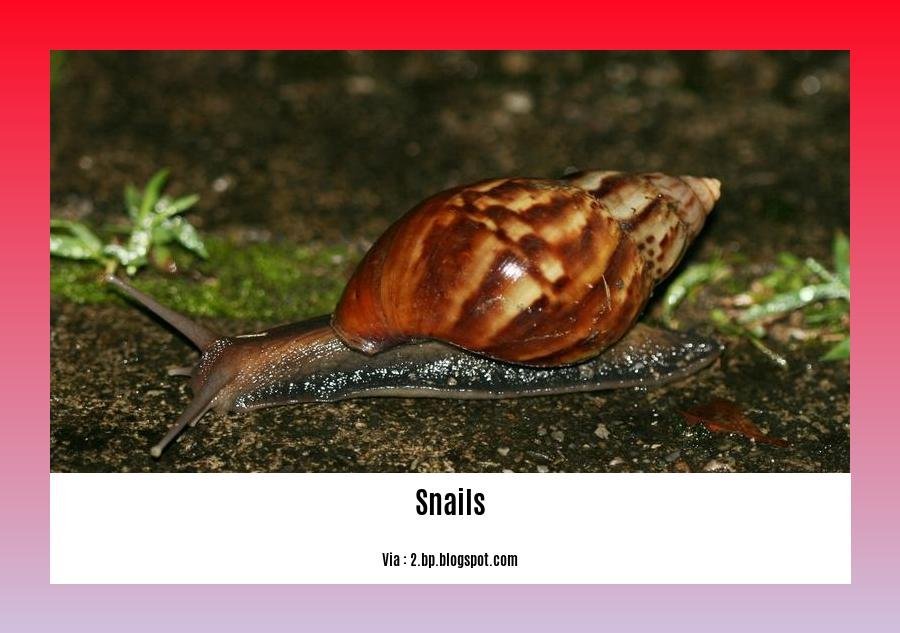
Dogs are known for their curiosity and tendency to eat just about anything they come across, including slugs and snails. However, it is important for pet owners to be aware of the potential health risks associated with their furry companions consuming these creatures. In this article, we will discuss some essential preventive measures to keep dogs safe from slugs and snails.
Why Dogs Should Avoid Consuming Slugs and Snails
While slugs and snails themselves are not poisonous to dogs, they can still pose a risk. One of the main concerns is the potential for lungworm infection. Lungworms are parasites that can infect dogs, and they are often transmitted through ingesting slugs or snails that carry the infective larval stage of the parasite.
Preventive Measures to Keep Dogs Safe
To ensure the safety and well-being of your canine companion, here are some essential preventive measures you can take:
Be Vigilant: Bring your dog’s toys and water bowls inside overnight to prevent infected slugs and snails from contaminating them.
Monitor the Number of Snails in Your Garden: If your garden is a popular spot for slugs and snails, consider using non-toxic methods to control their population.
Use Natural and Organic Pest Control: When getting rid of slugs and snails, avoid chemical-based pest control products that can harm your pets, children, and wildlife. Opt for natural and organic options to ensure everyone’s safety.
Regularly Treat Your Dog for Parasites: Prevention is key in protecting your dog from slugs and snails. Ensure that your dog receives regular treatment effective against lungworm and other parasites.
Limit Contact with Slugs and Snails: Minimize your dog’s contact with slugs and snails in general. Keep a close eye on your dog when they are outdoors and discourage them from investigating or consuming these creatures.
Consult with a Vet: If you have any concerns or suspect that your dog has eaten a slug or a snail, it is always best to seek professional advice from your veterinarian, especially if you live in an area where cases of lungworm in dogs have been reported.
By implementing these preventive measures, you can significantly reduce the risk of your dog being exposed to lungworm and other potential health hazards associated with slugs and snails.
Key Takeaways:
- Dogs should avoid consuming slugs and snails due to the potential risk of lungworm infection.
- Preventive measures include being vigilant, monitoring the number of snails in the garden, using natural pest control, regularly treating dogs for parasites, limiting contact with slugs and snails, and consulting with a vet when needed.
Sources:
- Dogs Eating Slugs & Lungworm | My Pet and I – @Elanco
- How to Stop Your Dog from Eating Slugs | Cooper & Gracie
Effective Solutions for Dealing with Slug and Snail Exposure in Dogs
Slugs and snails may seem harmless, but they can pose potential health risks to our furry friends. As responsible pet owners, it’s crucial to be aware of the dangers and take effective measures to protect our canine companions. Here are some key solutions for dealing with slug and snail exposure in dogs:
1. Preventive Measures:
- Keep snail and slug baits out of reach of pets.
- Use natural alternatives, such as planting lavender, rosemary, or mint, which deter snails and slugs due to their smell.
- Scatter coffee grounds around plants, as they deter snails and slugs. Use in moderation, as excessive amounts of coffee grounds can be harmful to pets.
- Avoid using garlic oils or products, as garlic is toxic to both dogs and cats.
Source: Preventive Vet
2. Prompt Veterinary Care:
If there is a suspicion of slug or snail bait ingestion by your dog, seek immediate veterinary care. Early intervention can make a significant difference in preventing serious health complications.
Source: Wag!
3. Monitor Your Dog’s Environment:
Be vigilant in monitoring your dog’s interactions with the environment. Avoid letting your dog investigate or consume slugs and snails. Bring your dog’s toys and water bowls inside overnight to prevent potential contamination.
Source: Hepper
4. Regular Veterinary Check-ups:
Schedule regular check-ups with your veterinarian to ensure your dog’s overall health and well-being. Discuss preventive measures and potential risks associated with slug and snail exposure.
5. Educate Yourself:
Stay informed about the potential dangers, symptoms, and treatment options related to slug and snail exposure in dogs. This knowledge will enable you to recognize warning signs and take appropriate action.
6. Train and Supervise Your Dog:
Proper training and supervision play a vital role in preventing dogs from consuming slugs and snails. Train your dog to follow commands such as “Leave it” or “Drop it” to discourage them from approaching or ingesting these creatures.
7. Consult with a Veterinarian:
If you have any concerns or suspect that your dog has consumed a slug or a snail, it is always best to contact your veterinarian for professional advice. They can guide you on the necessary steps to ensure your dog’s well-being.
8. Maintain a Clean Outdoor Environment:
Regularly inspect and clean your garden to remove any slugs and snails. Minimize the attractions that might draw these creatures to your outdoor space, such as standing water sources or excessive vegetation.
9. Limit Contact with Slugs and Snails:
Try to minimize your dog’s contact with slugs and snails in general. This can be achieved through proper supervision and using designated areas for outdoor playtime.
10. Consider Natural and Organic Pest Control:
When dealing with slug and snail populations, opt for natural and organic pest control methods that are safe for your pets, children, and the environment. Avoid chemical-based products that can harm your dog.
11. Stay Vigilant for Symptoms:
Be aware of symptoms such as vomiting, diarrhea, excessive drooling, tremors, or seizures. If your dog exhibits any of these signs after potential slug or snail exposure, seek immediate veterinary care.
Source: Vetster
12. Regularly Treat for Parasites:
Take preventive measures against lungworm infection by ensuring your dog receives regular treatment. Consult with your veterinarian for the most effective preventive products and protocols.
Source: My Pet and I – @Elanco
Remember, protecting your canine companion from the potential dangers of slug and snail exposure is essential. By implementing these effective solutions, you can help safeguard your dog’s health and well-being.
Key Takeaways:
- Preventive measures: Keep snail and slug baits out of reach, use natural alternatives, and avoid garlic products.
- Prompt veterinary care: Seek immediate professional help if slug or snail bait ingestion is suspected.
- Monitor the environment: Be vigilant and prevent potential contamination of toys and water bowls.
- Regular veterinary check-ups: Stay updated on preventive measures and potential risks.
- Train and supervise your dog: Teach commands to discourage interactions with slugs and snails.
- Stay informed: Educate yourself about dangers, symptoms, and treatment options.
- Consult with a veterinarian: Seek professional advice for concerns or potential consumption.
- Maintain a clean outdoor environment: Inspect and clean your garden regularly.
- Limit contact: Minimize your dog’s interaction with slugs and snails.
- Consider natural pest control: Opt for safe, organic methods to control slug and snail populations.
- Stay vigilant for symptoms: Be aware of any unusual signs and seek veterinary care if necessary.
- Regularly treat for parasites: Protect your dog from lungworm infection with regular preventive treatment.
FAQ
Q1: Can dogs get sick from eating slugs or snails?
A1: Yes, dogs can get sick from eating slugs or snails. These creatures may carry parasites or toxins that can cause health issues in dogs, such as lungworm infection or poisoning.
Q2: How does a dog become infected with lungworm from eating slugs or snails?
A2: Dogs can become infected with lungworm by swallowing slugs or snails that carry the larvae of the parasite. Once ingested, these larvae can develop into adult lungworms that can cause serious health problems in dogs.
Q3: What are the symptoms of lungworm infection in dogs?
A3: The symptoms of lungworm infection in dogs can vary but may include coughing, difficulty breathing, weight loss, fatigue, and changes in appetite. If you suspect your dog may have lungworm, it is important to consult with a veterinarian for proper diagnosis and treatment.
Q4: How can I protect my dog from the risks of eating slugs and snails?
A4: There are several preventive measures you can take to protect your dog from the risks of eating slugs and snails. These include keeping your dog’s toys indoors at night to reduce the risk of exposure to infected slugs, regularly treating your dog for parasites, and minimizing your dog’s contact with slugs and snails in general.
Q5: What should I do if I think my dog has eaten a slug or snail?
A5: If you suspect that your dog has eaten a slug or snail, especially in an area where lungworm cases have been reported, it is important to contact a veterinarian for guidance. They can provide appropriate advice on monitoring your dog’s health or recommending any necessary treatments.
